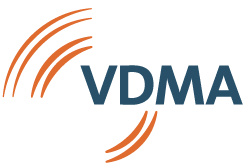The aim of the European regulation is to minimize the negative impact of packaging on the environment – with a high impact on the mechanical and plant engineering industry.
On March 4, 2024, the EU Parliament, the Council and the EU Commission reached a compromise on the Packaging & Packaging Waste Regulation (PPWR). The new regulation, which will replace the EU Packaging Directive 94/62/EC, is expected to come into force by the end of the year and take effect 18 months later.
ProduktionNRW, together with VDMA Nord, held a virtual information event on May 29, 2024 on the effects of the EU Packaging Regulation on the manufacturing industry in mechanical and plant engineering to discuss the impact on the industry.
The EU Packaging Regulation and the impact on the mechanical and plant engineering industry
Andre Koring, consultant for operational environmental protection and resource efficiency at VDMA, explained that the PPWR was developed on the basis of the European Green Deal. The EU packaging regulation aims to harmonize the handling of packaging and its waste in all EU member states. Specifically, the aim is to protect the environment by preventing or avoiding packaging waste. By 2030, for example, the proposed measures should lead to a reduction in greenhouse gas emissions from packaging to 43 million tons.
The PPWR takes into account the entire life cycle of packaging and contains comprehensive provisions on sustainability. In addition, the scope and application area will be expanded and measures on the waste hierarchy will be defined. This states that the highest priority is to prevent waste. Otherwise, it should be prepared for reuse or recycled. If this is not possible, other types of recovery such as waste incineration and disposal can be considered. At the same time, care must be taken to ensure that packaging waste is handled in a way that protects human health.
By issuing the EU Declaration of Conformity, the producer assumes responsibility for ensuring that the packaging meets the defined requirements (such as requirements for substances in packaging or the recyclability of packaging) of the regulation. The definition of producer includes any natural or legal person who manufactures packaging or a packaged product. Importers, on the other hand, are natural or legal persons based in the EU who place packaging or packaged products from a third country on the EU market. These importers must ensure that the packaging they place on the market complies with the requirements of the regulation.
The national Packaging Act (VerpackG) must be revised by the German legislator. Conflicting regulations in the PPWR take precedence over national law. Nevertheless, a separate regulatory area for a national packaging law will remain in the future, particularly with regard to the Central Agency Packaging Register (ZSVR), as well as the regulation of administrative offenses and official responsibilities.
Exchange of experience and discussion
In the concluding discussion, questions were raised about the distinction between B2C and B2B packaging, as is the case with the German Packaging Act, for example. As already mentioned, German legislation is being revised in line with the European regulation. According to the European regulation, all packaging is affected and does not differentiate between business orientations. It was also emphasized that the relationship between producers of packaging and importers of packaging must be clearly defined. This is because different challenges need to be considered depending on the role. Finally, the general question arises as to whether high reuse quotas for industrial packaging are ecologically sensible and technically feasible.


